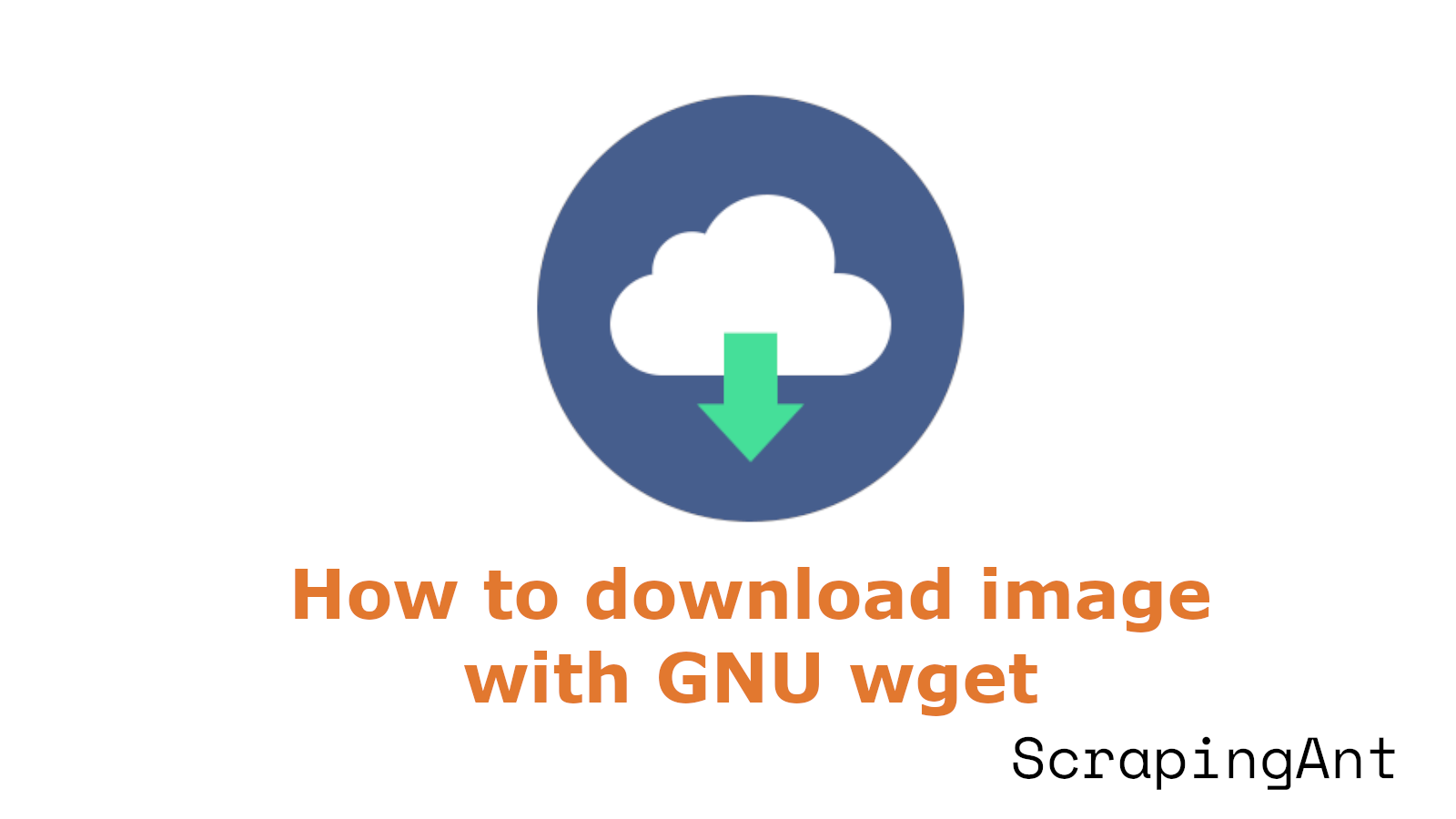
wget stands as a powerful and versatile tool, particularly for retrieving images from websites. This comprehensive guide explores the intricacies of using wget for image downloads, a critical skill for system administrators, web developers, and digital content managers. Originally developed as part of the GNU Project (GNU Wget Manual), wget has evolved into an essential utility that combines robust functionality with flexible implementation options.
The tool's capability to handle recursive downloads, pattern matching, and authentication mechanisms makes it particularly valuable for bulk image retrieval tasks (Robots.net).
As websites become increasingly complex and security measures more sophisticated, understanding wget's advanced features and technical considerations becomes crucial for efficient and secure image downloading operations.
Command Structure and Implementation Methods for Image Downloads with wget
Basic Command Structure for Image Downloads
The fundamental wget command structure for downloading images follows a specific pattern that combines options with target URLs. The basic syntax is:
wget -nd -r -P /save/location -A jpeg,jpg,bmp,gif,png http://website.com
Key components that make up the command structure (GNU Wget Manual):
-nd: Prevents creation of directory hierarchies-r: Enables recursive downloading-P: Specifies the download directory-A: Defines accepted file extensions- URL: The target website address
Advanced Pattern Matching for Image Selection
The wget command supports sophisticated pattern matching capabilities for precise image selection (Robots.net):
Wildcard Characters:
*: Matches any sequence of characters?: Matches single characters[]: Matches character ranges
Extension Filtering:
wget -A "*.jpg,*.jpeg,*.png,*.gif" --content-disposition URL
- Directory Level Control:
wget --level=2 -A "*.jpg" URL
Rate Control and Resource Management
To optimize download performance and manage system resources effectively:
- Bandwidth Throttling:
wget --limit-rate=1m -A "*.jpg" URL
- Parallel Downloads:
wget -nc --wait=2 --limit-rate=500k -A "*.jpg" URL
- Resource Constraints:
--wait: Adds delay between downloads--quota: Sets download size limits-nc: Prevents duplicate downloads
Error Handling and Recovery Mechanisms
Robust error handling ensures successful image downloads (Stack Overflow):
- Connection Recovery:
wget -c -t 5 --retry-connrefused URL
- Error Logging:
wget -o download.log -A "*.jpg" URL
- Timeout Settings:
wget --timeout=10 --tries=3 URL
Domain-Specific Implementation Methods
Different website structures require specialized approaches:
- Single Page Downloads:
wget -p -k -H -nd -A jpg,jpeg,png URL
- Cross-Domain Image Retrieval:
wget --span-hosts --domains=domain1.com,domain2.com -A "*.jpg" URL
- Authentication Handling:
wget --user=username --password=password -A "*.jpg" URL
- Robot Exclusion Override:
wget -e robots=off --wait 1 -A "*.jpg" URL
These implementation methods provide comprehensive control over image downloads while respecting server limitations and handling various edge cases. The command structure can be adapted based on specific requirements and website architectures.
Explore the most reliable residential proxies
Try out ScrapingAnt's residential proxies with millions of IP addresses across 190 countries!
Technical Considerations: Performance, Security and Common Challenges
Performance Optimization for Large-Scale Downloads
When downloading large volumes of images using wget, performance optimization becomes crucial. The initial indexing phase can significantly impact download times, particularly when dealing with datasets of 50-100GB (Stack Overflow). To optimize performance:
- Implement rate limiting (--limit-rate) to prevent server throttling
- Use parallel downloads with -nc (no-clobber) option
- Enable continue functionality (-c) for interrupted downloads
- Set appropriate wait times between requests (--wait parameter)
- Configure DNS caching to reduce lookup times
For recursive downloads exceeding 10GB, wget may experience hanging issues. Using alternative tools like lftp with mirror functionality can provide better performance for such large-scale operations.
Security Vulnerabilities and Mitigation Strategies
Wget faces several security challenges that require careful consideration (Security Stack Exchange):
Buffer Overflow Vulnerabilities:
- Historical instances of remote code execution
- Risk of malicious server responses
- Need for regular security updates
File System Access Controls:
- Implement AppArmor profiles
- Run wget as unprivileged user
- Restrict directory access permissions
- Configure download path isolation
Authentication Security:
- Avoid plaintext credential storage
- Use certificate-based authentication
- Implement secure cookie handling
- Enable SSL/TLS verification
Resource Access and Authentication Challenges
Complex authentication scenarios present unique challenges (TheLinuxCode):
Session Management:
- Cookie persistence across requests
- Session token handling
- Dynamic authentication requirements
- Rate limiting bypass mechanisms
Access Control:
- Client certificate management
- Multi-factor authentication support
- IP-based restrictions
- User agent verification
Resource Availability:
- CDN access patterns
- Geographic restrictions
- Load balancer interactions
- Cache control headers
Network and Protocol Considerations
Network-level optimization requires attention to:
Protocol Efficiency:
- HTTP/2 support utilization
- Keep-alive connection management
- Compression handling
- Content negotiation
Bandwidth Management:
- Adaptive rate limiting
- Connection pooling
- Request pipelining
- Traffic shaping compliance
Error Handling:
- Retry mechanisms
- Timeout configurations
- DNS fallback strategies
- Network interruption recovery
Anti-Bot Detection Avoidance
Modern websites implement sophisticated bot detection systems that wget must navigate (Super User):
Request Pattern Management:
- Randomized intervals between requests
- Variable user agent rotation
- Header order randomization
- Request fingerprint diversification
Behavioral Emulation:
- Browser-like header structures
- Cookie acceptance patterns
- JavaScript execution handling
- CAPTCHA bypass strategies
Traffic Pattern Optimization:
- Request distribution
- Connection timing variations
- Resource request ordering
- Referrer header management
The implementation of these technical considerations requires careful balance between performance optimization and security compliance. System administrators must regularly update their wget configurations to address emerging challenges while maintaining efficient download operations.
Conclusion
Wget's versatility in handling image downloads extends far beyond basic command-line operations, encompassing a sophisticated array of features that address modern web complexities. The tool's ability to manage large-scale downloads while navigating security challenges, authentication requirements, and anti-bot measures demonstrates its continued relevance in contemporary web operations (Stack Overflow).
However, successful implementation requires careful consideration of performance optimization, security protocols, and resource management strategies. As web technologies continue to evolve, wget's adaptability and robust feature set make it an invaluable tool for automated image retrieval tasks, though users must remain mindful of emerging security challenges and performance considerations (Security Stack Exchange).
The key to maximizing wget's potential lies in understanding and appropriately implementing its various command structures and technical configurations while maintaining a balance between efficiency and security compliance.
Check out the related articles: